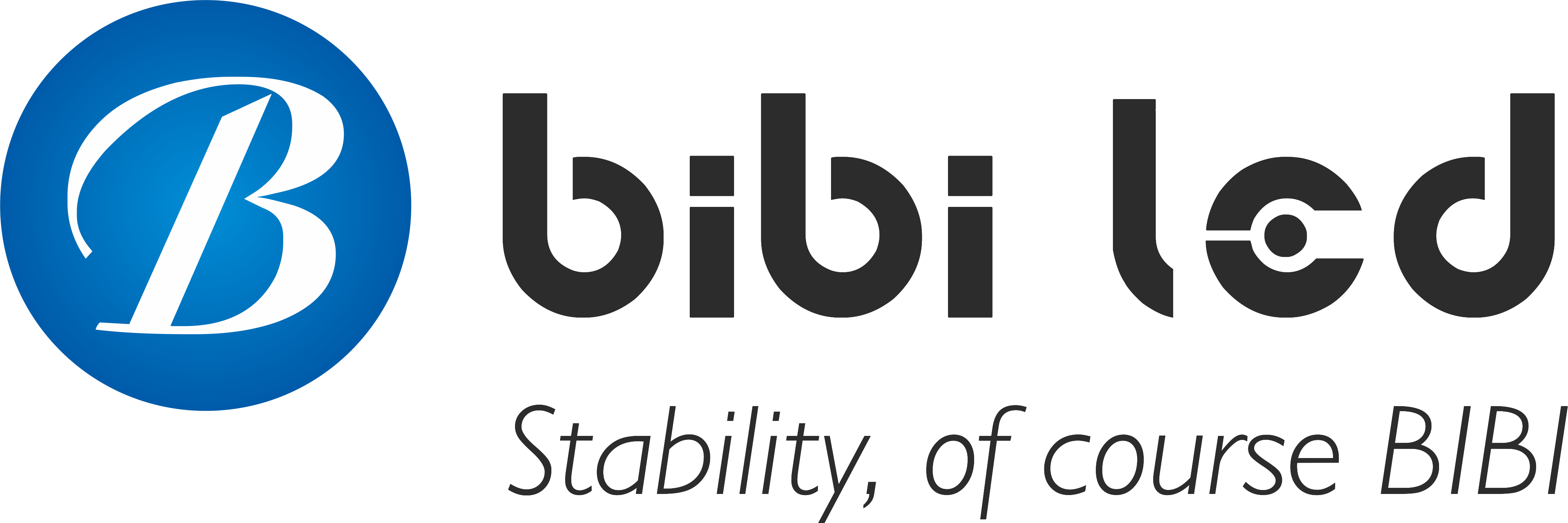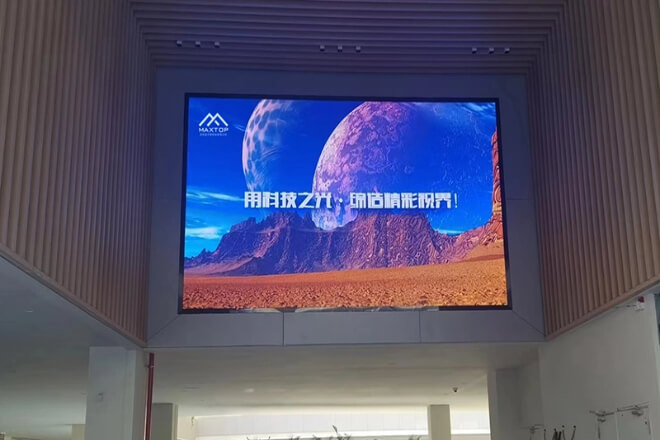序章
目次
1. 使用シナリオは決まりましたか?
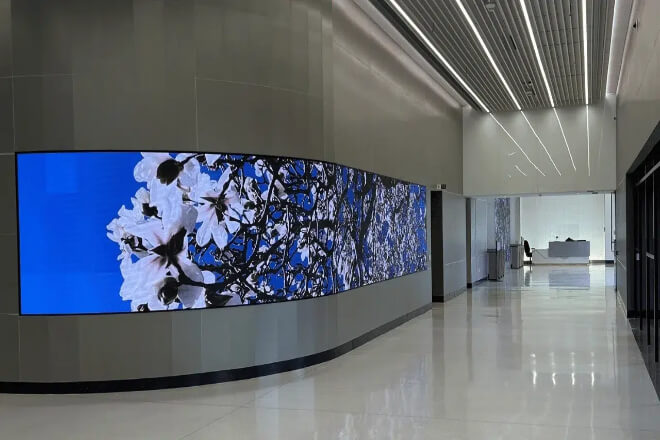
LEDディスプレイを購入する際、多くの人は価格、サイズ、または 解決 初めに。
しかし、より基本的でより重要な点を無視してください。スクリーンをどこに設置するのか、そして何に使用するのか?
考えてみてください。LED ディスプレイ スクリーンは屋内に設置されていますか、それとも屋外に設置されていますか?
使用時間は主に昼間に集中していますか、それとも夜間に頻繁に点灯していますか?
観客は数十メートル離れたところから観るのでしょうか、それともスクリーンの前に立って至近距離で閲覧するのでしょうか?
メインコンテンツは広告スローガンや製品グラフィック情報ですか、それとも高解像度のビデオやアニメーション効果をスムーズに再生する必要がありますか?
使用環境によって、明るさ、保護レベル、ドットピッチ、解像度などのパラメータの要件はまったく異なります。
こうした基本的なニーズをまず把握しておかないと、選んだ製品は「見た目は良いが、使い勝手が悪い」という結果になってしまいます。
一言で言えば、すべての LED スクリーンが適しているわけではありませんが、適切なものを選択すると、お金、心配、労力を節約できます。
2. 高輝度と高解像度の用途は何ですか?

多くの人は「高い 輝度LEDディスプレイを購入する際に、「高画質」と「高画質」を重視する傾向があります。どちらも「優れている」ように見えますが、実際の効果は全く異なります。
高い明るさは、主に画面を屋外、特に直射日光の当たる場所に設置する場合に、周囲光の干渉を抑えるために使用します。
例えば、建物の外壁、ショッピングモール、バス停などは、明るさが十分でなければ、日中はほとんど「見えません」。
したがって、屋外用 LED スクリーンには通常 5000 ニット以上の明るさが必要であり、一日中鮮明な視認性を確保するために 7000 ~ 10000 ニットに達するものもあります。
一方、高解像度は、画像の細部と鮮明さを重視します。これは、展示ホール、会議室、生放送室、近距離の小売端末など、屋内での使用において特に重要です。
人間の目は画面に近いため、画像のピクセル粒度が多すぎると、視聴体験に重大な影響を及ぼします。
そのため、高解像度の LED スクリーンでは通常、より小さなドットピッチ (P1.5、P1.2、または P0.9) が使用され、より繊細な画像やビデオコンテンツを表示できます。
さらに、両者の技術コストと電力消費の違いも考慮する必要があります。
高輝度スクリーンは通常、消費電力が高く、発生する熱量も大きいため、電源および冷却システムに対する要件も高くなります。
高解像度のスクリーンには、より多くの LED ランプビーズとより複雑な駆動回路が必要となり、材料と制御システムのコストが高くなります。
したがって、「どちらが優れているか」ではなく、「どちらがより適しているか」という問題があります。屋外広告の場合は高輝度が、屋内の高精細ディスプレイの場合は高解像度が適しています。
3. 予算が限られている場合、「シーン適応」を優先するにはどうすればよいでしょうか?
現実には、LEDスクリーンを購入する際に最も気になるのは「お金」であることが多いです。結局のところ、予算には限りがあるからです。
高輝度・高解像度の画面を求めると、間違いなくコストは上がります。その場合、「すべてを手に入れよう」と焦ってはいけません。
最も重要なことは、まず画面をどこに置くか、何に使用するかを決め、実際のニーズに応じて優先順位を付けることです。
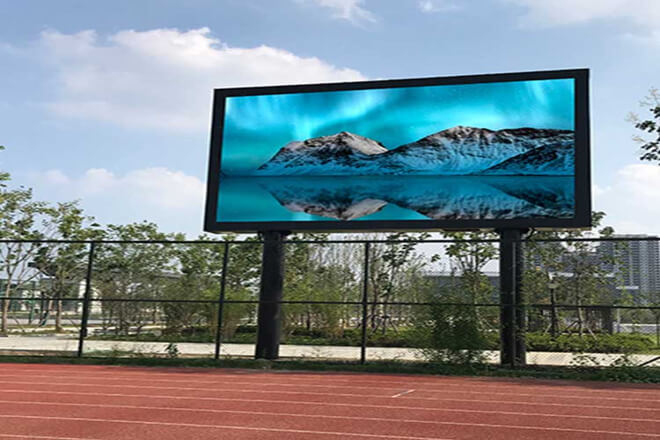
1). 屋外用LED広告スクリーン
屋外環境は日当たりが良く、画面の明るさが十分でないため、日中は広告コンテンツが基本的に「透明」になります。
誰がそれを見ることができるでしょうか?したがって、遠くからでもはっきりと見えるように明るさを最優先し、画像の詳細は二の次でなければなりません。
解像度を高くしすぎる必要はありません。文字が鮮明で、パターンがはっきりと認識できれば十分です。節約したお金で、より耐久性の高い素材を購入することもできます。
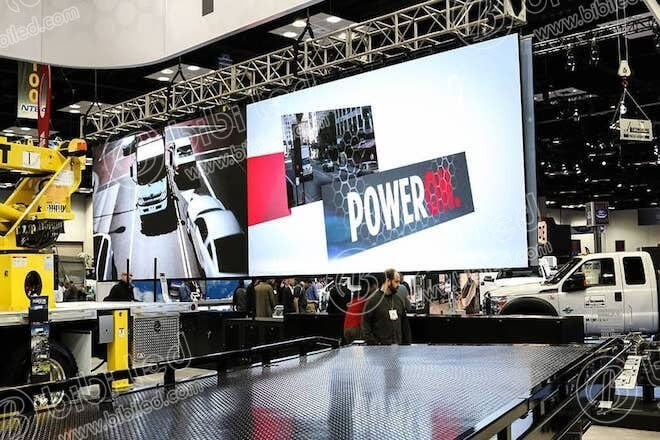
2). 展示 ホールのLEDディスプレイスクリーン
展示会場の照明は安定しており、観客はスクリーンに近づくため、より詳細な映像を見ることができます。映像はグレードに応じて繊細さが求められるでしょう。
現時点では解像度が重要になります。明るさは適度で、眩しすぎません。盲目的に極端な明るさを追求するよりも、高画質にお金をかける方が費用対効果が高いです。
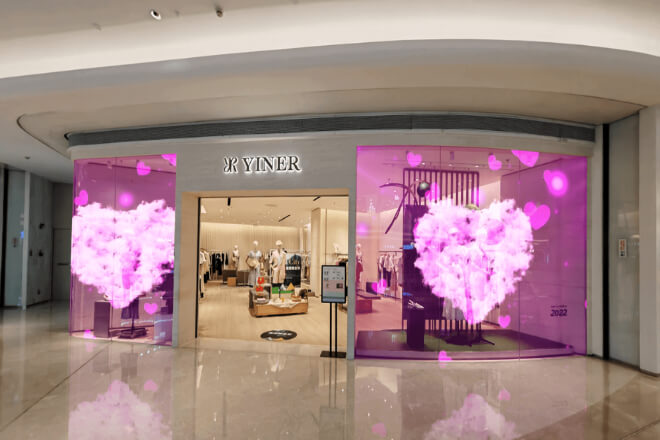
3). ショッピングモールの窓のLEDスクリーン
ショッピングモールの窓は、外から差し込む自然光とうまく向き合わなければならないという不都合な位置にあります。しかし、スクリーンの映像が粗く醜いものであってはなりません。
このとき、両端を考慮する必要があり、いずれの側面も無視することはできません。
日中の基本的な視覚レベルを満たす明るさを選択することをお勧めします。
そして、コンテンツがぼやけないように中程度の解像度と一致させ、コストが爆発的に増加しないようにします。
「一度きりの解決策」を考えるのではなく、その場所に最適な「ちょうど良い」解決策を選ぶのが賢明です。
結局のところ、LEDスクリーンはそれほど魔法のようなものではありません。シーンに合えば合うほど、より便利になります。
予算が限られている場合は、無理にパラメータを決めすぎないでください。適切なものを選ぶことでのみ、スクリーンの価値を最大限に引き出すことができます。
4. 陥りやすい落とし穴:「パラメータに基づいて購入する」よりも「効果に基づいて購入する」方がよい。
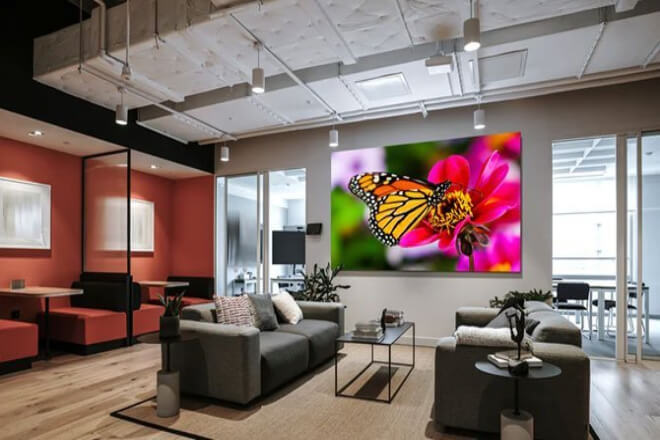
多くの人が LED ディスプレイ スクリーンを購入するとき、最初の反応はパラメータ テーブルをじっと見つめ、明るさが高く、解像度が大きいほど、スクリーンの品質が良いはずだと考えることです。
しかし、実際に使用してみると、理論上のパラメータと実際の効果が大きくかけ離れていることがわかります。
たとえば、屋外用の LED スクリーンの中には、数万ニットの明るさを謳っているものがあり、そのパラメータを確認するのは非常に魅力的です。
しかし、画面が直射日光に当たる位置に設置されていたり、コンテンツのデザインが派手すぎると、映像が眩しくて不快に感じてしまいます。
言うまでもなく、視野角が不合理であれば、画面の明るさをどれだけ高くしても、良い効果は保証されません。
逆に、観客が遠くに立っている場合、屋内の高解像度スクリーンは、いくら高解像度であっても実際には役に立ちません。細部は全く鮮明に見えず、お金が無駄になってしまいます。
コンテンツの種類については、この点が見落とされがちです。例えば、LEDスクリーンをシンプルな広告スローガンの表示にのみ使用する場合は、極端に高い解像度を追求する必要がなく、コストが増大します。
逆に、高解像度のビデオやアニメーションを再生する場合、解像度が低いと明らかにぼやけて、視聴体験に影響を与えます。
コンテンツ、 視聴距離、およびパラメータは 3 つの要素であり、いずれも欠落することはできません。
したがって、LED スクリーンを購入するときは、パラメータ表だけでなく、実際の効果と使用シナリオを確認することが重要です。
より頻繁にサイトにアクセスしたり、同様のニーズを持つ事例を参照したりすることをお勧めします。
多くの販売店はモデルルームや試験放送ビデオを用意しており、複数のモデルを体験して、さまざまな環境での映像のパフォーマンスを確認することができます。
つまり、冷たい数字に惑わされないでください。画面を購入する上で重要なのは、実際の視聴体験なのです。
予算が限られている場合は、高いパラメータを盲目的に追求するよりも、シーンに最適なスクリーンを選択する方がはるかに費用対効果が高くなります。
5. どちらかを選択する必要がある場合、次の3つのシナリオでは高輝度を選択することをお勧めします。
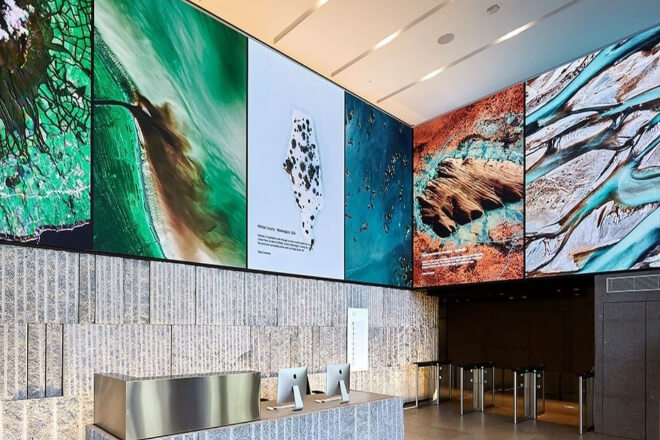
LED スクリーンを購入する際、予算や技術的条件が限られていると、「高輝度」と「高解像度」のどちらか 1 つしか選択できないという困惑に遭遇することがよくあります。
心配しないでください。次の一般的なシナリオでは、高輝度を優先するのが最も賢明な選択です。
1). 屋外全天候型再生
灼熱の夏の日でも、曇りの雨の日でも、屋外スクリーンは一日中稼働する必要があります。
このとき、明るさが足りないということは見えないということであり、日中は広告コンテンツが基本的に「透明」になっていることになります。
たとえば、路上の大きな広告スクリーンや広場のアクティビティスクリーンなどです。
光の強さに関わらず、通行人の目にはっきりと映り、注目を集めるためには、高輝度が不可欠です。
2)ガラス窓からの強い直射光
多くの人はガラス窓の特殊性を無視しています。太陽光はガラスを通過して直接スクリーンに当たり、反射と光透過が画質に深刻な影響を与えます。
明るさが十分でない場合、画面の内容が暗く見え、魅力が大幅に低下します。
明るさを上げると、自然光の干渉に抵抗できるだけでなく、画像の色がより鮮やかになり、効果がより魅力的になります。
3)交通標識と広告用道路標識
交通標識や道路標識は、安全と情報伝達という重責を担っています。昼夜を問わず、晴れでも雨でも、情報は一目で明確に伝わらなければなりません。
高い輝度により、ドライバーや歩行者はさまざまな複雑な照明条件下でも重要な情報を素早く把握し、誤判断を避け、安全を確保できます。
看板も同様です。内容が明確である場合にのみ、露出効果は最大限に高まります。
これらのシーンでは、明るさがほぼ「命綱」となります。解像度も重要ですが、明るさほど重要ではありません。
盲目的に超高解像度を追求するのはやめましょう。まずはコンテンツが見やすいことを確認することが、最も基本的な「勝利」です。
つまり、屋外、窓際、交差点などに画面を設置する場合は、まず明るさを上げて、それから解像度を検討しましょう。そうすれば、費用対効果が高く、多くのトラブルを回避できます。
6. 以下の3種類のシーンでは、高解像度を優先することをお勧めします。
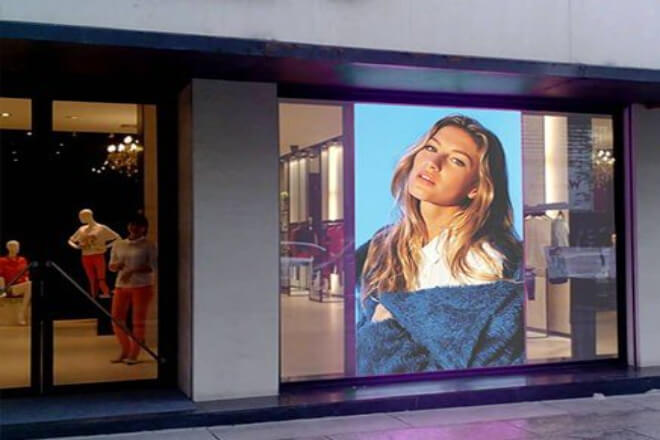
先ほど述べた高輝度シーンとは異なり、これらの環境では画像の詳細と鮮明さに対する要件が高くなります。
明るさは適度に抑え、解像度を優先することで、より洗練された質感のある映像を表現できます。
1). 美しい写真が飾られた展示ブースやアクティビティ
展示会やイベント会場は、ブランドイメージを訴求する重要な戦場です。観客はスクリーンに非常に近いため、映像の精細さと視覚的インパクトは非常に高くなります。
高解像度の LED スクリーンは、豊富な詳細と色レベルを表現できるため、アニメーション、ビデオ、静止画像がより魅力的になり、全体的なグレード感が向上します。
2)生放送室、会議室、スタジオ
これらの屋内スペースは、主にプロの撮影やリアルタイムのインタラクションに利用されており、画面品質は視覚効果に直接影響します。高解像度により、ホストの背景など、鮮明で繊細な画像が保証されます。
表示内容は粒状感や色の歪みがなく、高解像度カメラや視聴者の視覚ニーズを満たします。
3) 売場面積が狭く、視認距離が短い小売店舗(マタニティショップ、高級店など)
限られたスペースでは、顧客はスクリーンに非常に近いため、画像の細部まで簡単に確認できます。
特に、ブランドイメージに対する要求が高いマタニティショップや高級店などの場所では、解像度が不十分だと粗く見え、顧客体験やブランド認識に影響を与えます。
高解像度の画面は、高精細な製品の詳細を表示できるだけでなく、全体的な環境の現代性と品質も向上させます。
まとめると、これらのシーンは「はっきりと見て、注意深く見る」ことに重点を置き、予算と技術を解像度に集中させるのに適しており、無駄を避けるために具体的な環境に応じて明るさを調整できます。
7. 妥協戦略は参考になる
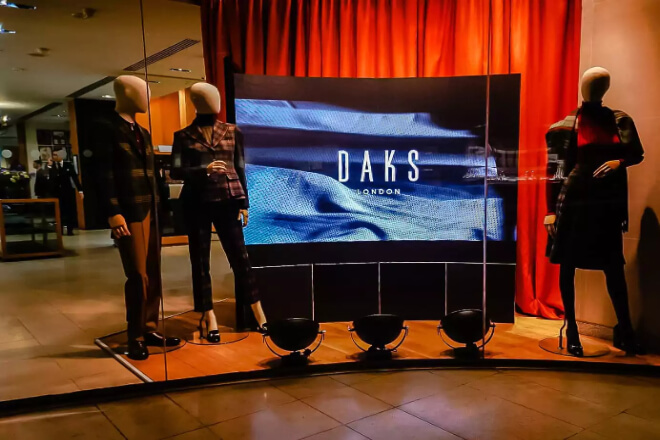
高輝度と高解像度の両方が必要なのに、予算と技術的条件が限られている場合は、妥協策を講じることで、半分の労力で 2 倍の結果が得られることがよくあります。
ここでは、限られた投資でスクリーン効果を最大化するための実用的なヒントをいくつか紹介します。
画面が大きくなるほど、明るさや解像度に対する要件が高くなり、コストも上昇します。
予算が限られている場合は、画面領域を縮小して、コアとなる情報やコンテンツの表示に重点を置くことを検討してください。
これにより、コストを節約できるだけでなく、視聴者の集中力を高め、情報過多を回避することもできます。
ドットピッチが小さく、明るさが中程度の画面を選択するのが、現在最も人気のある妥協策です。
ピッチが小さいため、画像の詳細が十分に鮮明になり、特に近くで見るのに適しています。
中程度の明るさは、ほとんどの屋内環境と一部の屋外シーンに対応し、過度の明るさによるエネルギー消費と熱の問題を回避します。
サンシェードは、まるでスクリーンに「サングラス」をかけるようなもので、強い周囲光の干渉を効果的に軽減します。
特に直射日光や強い室内照明の場合、画像のコントラストが向上し、コンテンツがより鮮明で目を引くようになります。
反射フィルムは光の利用率を高め、スクリーンから放射される光を観客の目によく反射し、視覚的な明るさと画像の質感を向上させます。
これらの補助ツールを使用すると、画面の明るさパラメータを大幅に上げなくても、画像をより明るく、より階層化することができます。
一般的に、妥協戦略は予算を合理的に割り当てるのに役立つだけでなく、極端なパラメータを盲目的に追求することで発生する高コストや技術的な困難を回避するのにも役立ちます。
適切なソリューションを選択すると、画面効果が人間の目にも印象的になり、ユーザーエクスペリエンスもより快適になります。
8. 結論
この記事を読んで、LEDディスプレイの選び方についてより明確な方向性が見えてきましたか? 正しいものを選ぶことが最善です!
予算がいくらであっても、使用シナリオに合った適切なスクリーンを選択すれば、コストパフォーマンスを最大限に高めることができます。
最後に、LEDディスプレイについてもっと知りたい方は、 お問い合わせください.
